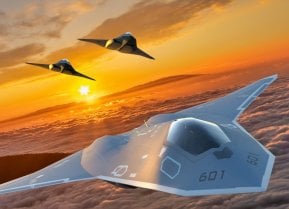Why America Will Never Sell the F-22 Raptor Fighter
Despite interest from key U.S. allies like Australia, Israel, and Japan, the F-22 Raptor was never sold abroad, primarily due to concerns over protecting its advanced technological secrets and maintaining regional military balances.
Summary: The F-22 Raptor, a marvel of modern aviation and the world's premier air superiority fighter, faces an inevitable sunset as its operational numbers decline without prospects for production revival. This stealth fighter, exclusive to the U.S. Air Force since its service commencement in 2005, marked a significant leap in combat aircraft technology but will retire once the Next Generation Air Dominance program's successors are ready in the 2030s. Despite interest from key U.S. allies like Australia, Israel, and Japan, the Raptor was never sold abroad, primarily due to concerns over protecting its advanced technological secrets and maintaining regional military balances.
Why the World's Best Fighter Jet, the F-22 Raptor, Was Never Exported
The F-22 Raptor is the best air superiority fighter jet in the world. It also happens to be the first stealth fighter jet to become operational.
Today, however, the F-22 is a dying aircraft, with the number of operational airframes diminishing each year. With its production line closed, the F-22 Raptor awaits its retirement once its replacement aircraft from the Next Generation Air Dominance program becomes operational in the 2030s.
The F-22 Raptor is also remarkable because it was never exported to a foreign country. The U.S. Air Force is its only user.
F-22: We Are Not Selling!
The F-22 Raptor entered operational service in 2005. In 2011, its production line was shut down to focus on the upcoming F-35 Lightning II.
As the first operational stealth fighter jet, the F-22 had many fans around the world. Several foreign air forces asked the U.S. Department of Defense about the stealth fighter’s availability. Specifically, Australia, Israel, and Japan – all important U.S. allies – repeatedly expressed their interest in purchasing the Raptor. Their requests came to nothing.
Back in the day, arguments for selling the F-22 Raptor to trusted foreign partners included benefits to the U.S. defense and aerospace industry, as well as fostering closer relations with allies. Arguments against selling the fighter centered around the aircraft’s classified technology.

“Protecting U.S. intellectual property in these technologies, and denying access by adversaries, is a high national security priority,” a Congressional Research Service report highlighted in 2007. “It is unclear whether the United States and Japan could come to terms on the capabilities to be offered in the export variant of the F-22. Japan would likely want an aircraft the same as, or similar to, that flown by the U.S. Air Force.”
A secondary argument against selling the aircraft to foreign partners was that Washington should not seek to upend regional military balances. When this debate was taking place in the 2000s, China and Russia did not present the same threat to U.S. national security that they do now – China especially. The Global War on Terror was in full swing, and it required the U.S. military’s full attention. Maintaining stability in other parts of the world was seen as crucial for a U.S. military fully concentrated on the insurgency in Iraq and the defeat of the Taliban in Afghanistan.

Interestingly, the Pentagon seemed okay with a potential sale of the F-22 to select trusted allies. According to a Department of Defense report on the feasibility of exporting the Raptor, the Air Force conducted studies on potential export versions of the fighter. Nevertheless, Congress blocked any potential foreign sale of the first stealth fighter jet to fly the skies.
To begin with, the F-22 Raptor was never meant to be exported. This makes it very unlike the F-35 Lightning II, which relies on a global partnership that now involves 18 countries.
About the Author
Stavros Atlamazoglou is a seasoned defense and national security journalist specializing in special operations. A Hellenic Army veteran (national service with the 575th Marine Battalion and Army HQ), he holds a BA from the Johns Hopkins University, an MA from the Johns Hopkins’ School of Advanced International Studies (SAIS). He is pursuing a J.D. at Boston College Law School. His work has been featured in Business Insider, Sandboxx, and SOFREP.
Image Credit: Creative Commons.


